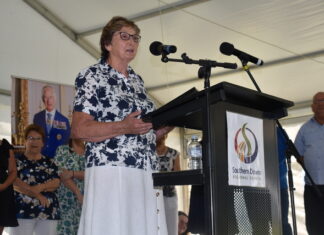Following on from the story on the quolls you kindly included in last week’s paper I received an anonymous call from a lady encouraging me to “check my research” as quolls “aren’t endangered”. As there was no name or number left, this is the only way I can address this.
The southern subspecies of spotted-tailed quolls are categorised as vulnerable under the State Nature Conservation Act 1992 and endangered nationally under the Federal Environment Protection & Biodiversity Conservation Act 1999. The subspecies is listed as ‘high priority’ under the DERM Back on Track species prioritisation framework. Just because you see or hear animals in the bush doesn’t mean they are not vulnerable or endangered. In fact the classification ‘vulnerable’ actually means that, whilst a population may be ‘abundant’, they are “at risk due to threatening processes” or they are “a localised population dependent on limited habitat that is at risk because of threatening processes”. The proposed Cherrabah development constitutes a “threatening process”. The Cullendore population constitutes a “localised population dependent on limited habitat”. We have never said the quolls aren’t at Cullendore – in fact the opposite is our assertion. That population is considered to be the most abundant known population in SE Qld – and if you look at the petition you will see this is the reason why we have referred to the population as the “last stronghold” of the subspecies in SE Qld. Motion sensor cameras have been put out at Cullendore in the last couple of weeks which have captured individual animals so we know they are there. Their presence doesn’t change their classification but it does mean that knowing they are there, there is a responsibility on the part of property developers to ensure their developments do not impact this federally-listed endangered subspecies.
If I was to ask you whether the koala is endangered, most people would answer yes – but in fact it is likewise listed as ‘vulnerable’ under State legislation and the Federal department is yet to make a decision on its listing of the koala nationally as ‘threatened’ under the EPBC Act. Internationally (IUCN Red List) the koala is considered a species “of least concern” – yet the ST Quoll is categorised on that list as ‘vulnerable’.
There are longer-term, far-reaching ramifications to property owners out there if the development goes ahead. There is a moratorium on development in the Murray-Darling Basin that takes water – yet the Government has nothing to say even though this development has the potential to pump the aquifers dry – what will happen to other property owners in the area when that happens?
The irony is that, whilst you may not like quolls, and they may not be as cute and cuddly as a koala or a bilby, they are equally as important to protect from extinction by the activities of man. We have an opportunity to be proactive rather than reactive and act now to protect this population under imminent threat rather than wait and see what happens and see it potentially go the way of the bilby. Australians donate large sums to orangutans, tigers, and gorillas. This is an opportunity for us to act now to protect an animal in our own back yard. Given the local and State governments have ignored their own planning schemes and legislation to allow this development to move to the next stage, it is now left to the federal classification of the ST quoll as endangered to protect the interests of other landowners in the Cullendore region by asking the Federal Minister to make the decision neither our local government nor State government seemed capable of making.
I would encourage you to look at the online petition which outlines precisely what we are calling for and why – bit.ly/stquolls – the petition refers to the subspecies as endangered because that is how it is classified under the Federal legislation. Given the development application is currently before the Federal Minister, we need to use this classification term.
Incidentally, as at Monday we are now over 450 signatures! Thank you so much!
Lyn Bishop
Warwick






